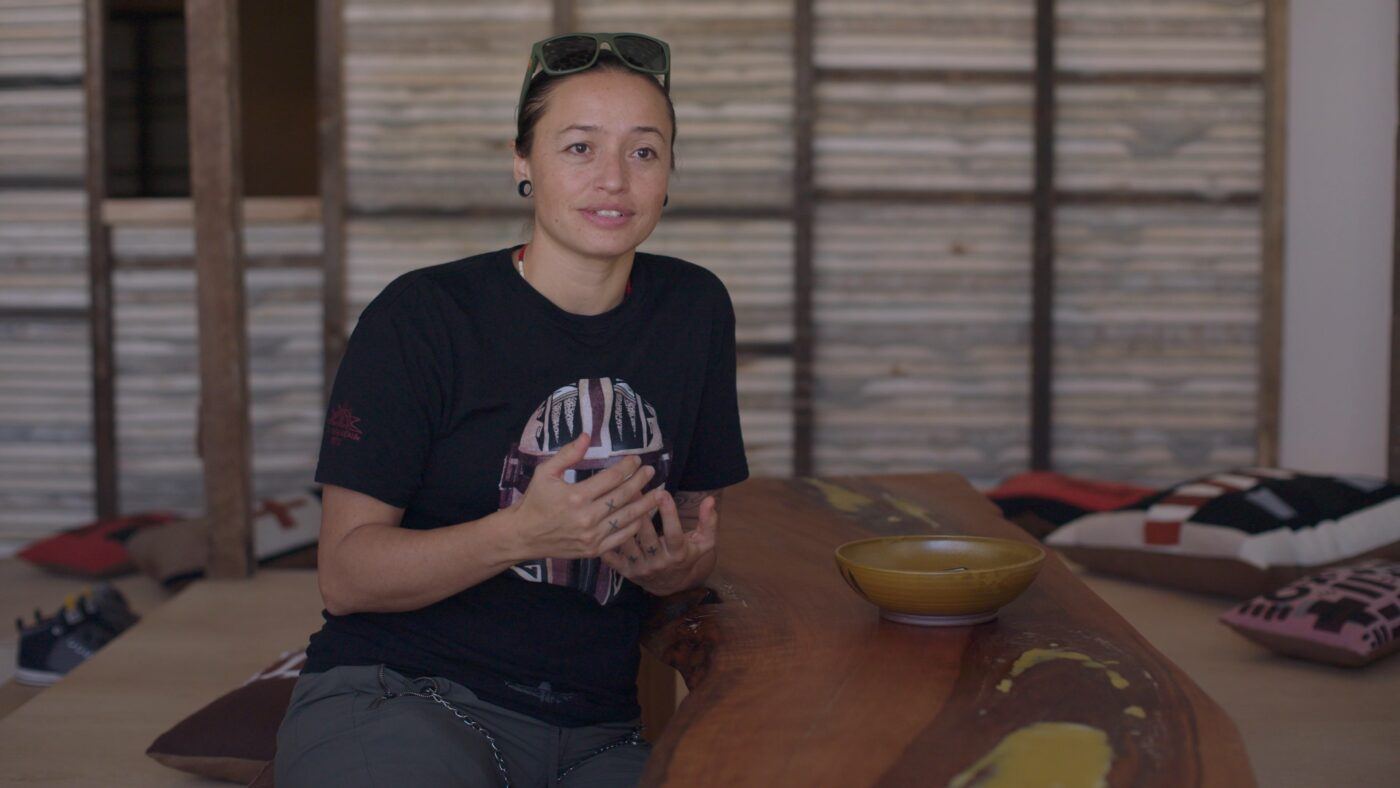Rose B. Simpson

Rose B. Simpson was born in 1983 in Santa Clara Pueblo, New Mexico, where she lives and works today. In 2007, the artist received her BFA from the Institute of American Indian Arts, and in 2011, she received her MFA in Ceramics from the Rhode Island School of Design. Simpson’s work reflects on the multilayered history of her home in New Mexico and of the United States, exploring modes of empowerment and resilience that carry traditions into the future. Working across media, the artist finds new ways to connect past and present, express experience and identity, and contemplate freedom and strength.
Simpson often works in clay, a material passed down to her by her mother, artist Roxanne Swentzell, and great-grandmother, artist Rose Naranjo. Alongside inherited techniques, the artist also uses one she developed herself called “slap-slab,” where she creates thin, rectangular sheets of clay that are layered to build her ceramic forms. These figures often represent people but vary significantly in size and affect, and are adorned with materials ranging from ceramic beads to saw blades. In Root A (2019), a figure stands with arms crossed, wearing leather straps, metal pieces, and a circular saw blade connecting its body to its head in place of a neck. In works like Brace (2022) and Legacy (2022), the artist places two minimally decorated figures in relation to each other, leaning against or holding one another. These sculptures mirror Simpson’s expansive vision: representing power and strength with rigid materials and assertive stances alongside depictions of these same qualities through interpersonal relationships and moments of quiet support.
Simpson’s work includes more than her ceramic sculptures; a 1985 Chevy El Camino, Maria (2014), is but one example. The car is named for Maria Martinez, a Tewa potter from San Ildefonso Pueblo, who developed the black-on-black style, which is particular to the region of New Mexico the two artists share. In homage to Martinez, the artist imitated the black-on-black style on the car’s body using a black satin base with a clear gloss over it. Maria has been used in performances, exhibited as a stationary sculpture, and driven through the seemingly boundless landscapes of the artist’s hometown, reflecting the porous barrier between art and daily life in Simpson’s practice. Her work often references the personal and intimate in connection with something greater, obliquely engaging the histories and knowledge of her Indigenous community and reflecting the enduring oppression and resilience of Indigenous peoples across the United States.
Videos 3
-
Rose B. Simpson
“I’m trying to reveal our deep truth and that deep truth is process.”
Rose B. Simpson

